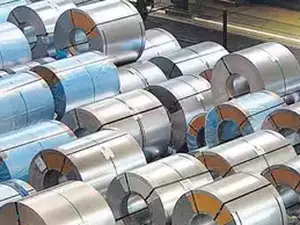Can Arun Jaitley show some mettle for the steel sector in this Budget?

Rising raw material costs, high customs duties and lower than expected demand growth seem to be major pain points that steel sector players want the Budget to tackle this year. Companies feel improved supplies of locally available inputs like coal, iron ore and graphite electrodes, removal of customs duty on key raw material like ferro-nickel and scrap for stainless steel and an overall thrust on demand generation through higher infrastructure spending will make life a bit easier for them.
At a time when the sector is saddled with 40 million tonne (mt) of surplus installed capacity, with only a few profitable plants amid a bunch of others like Essar Steel, Bhushan Steel and Electrosteel battling debt and insolvency resolution, experts feel, it is important that the operating cost of the sector is brought down. For this, steelmakers want assured supplies of locally available inputs like iron ore.
This year, iron ore exports are tipped to increase to 30 mt as opposed to 24 mt last year. With domestic supply falling short of demand, this has pushed up prices. Similarly, other key steelmaking raw materials like dolomite, graphite electrodes etc have also seen major price hikes. Exports of graphite have increased by 49% with only a 13% decline in their imports. Industry feels measures to check exports would improve supply and stabilise prices in the domestic market.
"Iron ore export duty should be re-imposed," Seshagiri Rao, joint MD of JSW Steel said adding, "an export duty of 30% should be imposed on exports of graphite electrodes."
Steel experts too believe that the landed price of raw materials is an important area to focus on. "Reduction of import duty on coking coal, rationalisation of freight and subsuming of the District Mineral Foundation (DMF), National Mineral Exploration Trust (NMET) etc. into the Goods and Service Tax (GST) are needed urgently," Niladri Bhattacharjee, partner, strategy & operations, mining & metals, KPMG in India said.
While this could a bone of contention between exporters and merchant miners, the steel sector is equivocal in its demand for raising domestic consumption of steel.
Per capita use of steel in India is at 65 kg, much lower than the world average of 200 kg. Experts like JSW Steel's Rao feel higher spends on infrastructure can be a game changer in this, and more allocation of funds need to take place in infrastructure and irrigation.
T V Narendran, MD & CEO of Tata Steel also feels the steel industry and Tata Steel would benefit if the government decides to invest more in infrastructure in the budget this year. "You cannot build infrastructure without steel. It forms the biggest component of the steel policy. Secondly, better infrastructure reduces the cost of production since logistics remains a big issue in India and drags down production cost."
While reservation in favour of domestic steel companies for government contracts has already been implemented through Domestically Manufactured Iron and Steel Policy (DMISP), going forward, KPMG's Bhattacharjee said action in terms of recycling and crash-test norms for automobiles, quality-standard specifications for some steel grades etc. would support the sector.
Stainless steel makers too will gain with policy support from Make in India and investment in infrastructure, smart cities and the Railways.
While India has emerged as the fastest growing stainless steel market in the world, per capita consumption of stainless steel is at a mere 2 kg against the world average of 6 kg. The industry expects to grow at about 8-9% and achieve a production of about 5.5 mtpa by 2022 from the present level of about 3.5 mtpa.
Indian Stainless Steel Development Association (ISSDA), the apex industry body, has appealed for removing customs duty on ferro-nickel, a key raw material that has to be necessarily imported because India hardly has any nickel resources. Currently, the customs duty of ferro-nickel is 2.5%, which they feel should come down to nil. While custom duty on pure nickel was removed in the last budget, it didn't help the industry much since most of the nickel is used by stainless steel makers in the form ferro-nickel. Similarly, duty exemption on stainless steel scrap, which currently attracts 2.5% customs duty, could help the industry since a lot of the stainless steel is produced through electric furnaces, where scrap is the main raw material. It also provides a cost-effective source of alloying elements like chrome and nickel. The scrap is also not available in the country and has to be imported.
President, ISSDA, K K Pahuja said: "We appeal to the Finance Ministry to remove basic customs duty on both ferro-nickel and stainless steel scrap".
President, ISSDA, K K Pahuja said: "We appeal to the Finance Ministry to remove basic customs duty on both ferro-nickel and stainless steel scrap".
Primary Steelmakers
Pain point: High raw material cost
Solution: Rein in exports of locally available raw materials
Pain point: Need to grow local steel demand
Solution: Higher allocation of infrastructure through investment in ports, roads, railways and irrigation.
Stainless Steel
Pain points: Low consumption growth
Solution: Positive policy support from Make in India and investment in infrastructure, smart cities and railways are expected to provide an impetus for further growth.
Pain point: Customs duty on key raw materials like ferro-nickel and stainless steel scrap raise input costs
Solution: Remove duty on ferro-nickel and stainless steel scrap from 2.5% to zero
